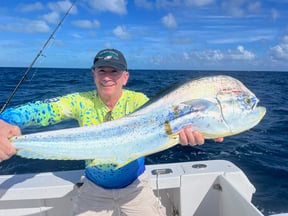We started Captain Experiences to make it easy to book fishing and hunting guides around the world. With over 1,500 Damn Good Guides, our platform makes finding and booking a trip seamless. Head here to check out our trips.

An aerial shot off the Texas coast.
The Captain Experiences team recently bought a DJI Mavic Mini (its awesome) to take some shots for our site. Last week we were out fishing with one of our Damn Good Guides near Port O’Connor, Texas and saw hundreds upon hundreds of redfish schooling up. I was going to use our new drone to take some awesome footage of all of those fish. I really wanted to. And I would have loved to share that footage with the world (or at least, those who care about redfish). But it is with great sadness that I realized the footage would have been illegal, and so I have to settle for this blog about rules and regulations for drone flying in Texas and beyond.
Let’s cut to the chase: you probably found this page because you’re like me - you want to take some awesome footage of wildlife and want to know whether you’re going to get in trouble for using drones while out hunting or fishing. You might be trying to take the pictures just to have them, or you might be trying to scope out where the animals/fish are, but either way, the short answer is: using drones to target wildlife can get you in decent trouble here in Texas and in a few other places in the United States as well. In this post I’ll walk through the rules and regulations for flying drones in the great outdoors (and, generally speaking, the same rules apply to photography from other aircraft such as helicopters or small planes).
Drone Law in Texas
There are two sections of Texas administrative code (the state law) that you will want to be aware of before you try to use drones for wildlife photography:
-
General rules and regulations as found in Chapter 423 of Texas Administrative Code. This section outlines a bunch of regulations for drone use, but the most relevant for hunters and anglers are the following:
-
a. It is unlawful to capture images of individuals or anything else on private property that is not your own.
-
b. It is unlawful to capture images in the airspace over critical infrastructure (most relevant to this article are dams, ports, railroads, pipelines, drilling sites, or animal feeding operations).
-
-
Rules and regulations specific to wildlife photography as found in Chapter 65 of Texas Administrative Code. These regulations specifically limit the ability to photograph or video any wildlife from the air and restricts that access to certain licensed individuals. You can find simplified language on the Texas Parks & Wildlife website.
-
a. It is unlawful if a person “counts, photographs, relocates, captures, hunts, or takes or attempts to count, photograph, relocate, capture, hunt, or take from an aircraft any wildlife or exotic animals” or otherwise harasses wildlife from the air or kills wildlife other than hogs or coyotes.
-
b. The exception to the above rule is for individuals with an Aerial Management Permit - “A permit issued by the department to count, photograph, relocate, capture, hunt or take wildlife or exotic animals by the use of aircraft” but only on land they own or land they receive special authorization for.
-
While there are certain individuals who can be exempt from these state rules (law enforcement, researchers, certain licensed individuals with an Aerial Management Permit), the rules apply to most people in Texas. Violation of these state laws can result in a misdemeanor and 5,000 - 10,000 dollar fines for each offense of taking photos or distributing them.
Other State Drone Laws:
If you do not live in the Great State of Texas, statedronelaw.com appears to have a pretty comprehensive guide to every state’s drone laws.
Federal Drone Laws:
We won’t get into this here, but there are federal laws to be aware of as well, mainly that any drone over 0.55 pounds (250 grams). For more information, view the FAA guide to getting started with your drone.
So...can I use a drone to photograph fish, deer, birds, etc. in Texas?
In summary, while it appears that drone surf fishing (using a drone to carry a line past the surf for you before dropping it into the ocean) appears to be safe for now, it is best to be careful using drones to photograph any wildlife and especially when distributing those images lest you end up with a misdemeanor and a few thousand in fines.
But there is good news: our Damn Good Guides already know where the fish are so you won’t need to go searching for them by drone anyways. Book a fishing trip now and let our guides help you catch the best fish of your life.
Attison Barnes
Updated on August 3, 2023

April 15, 2022

June 3, 2021

February 18, 2021

August 1, 2022

January 7, 2022
Related Articles
September 24, 2022
June 27, 2023
September 28, 2022


